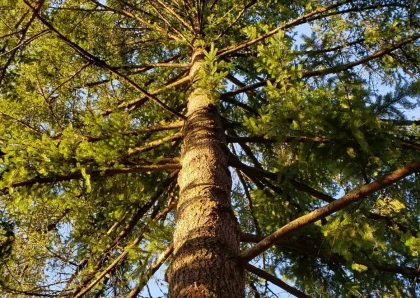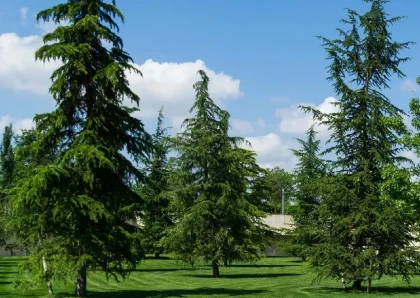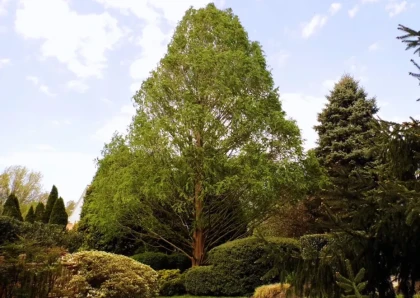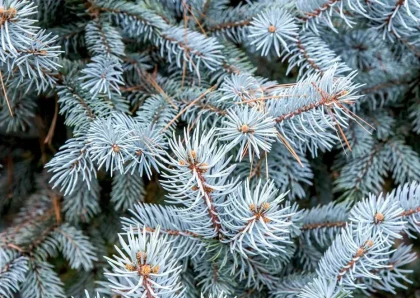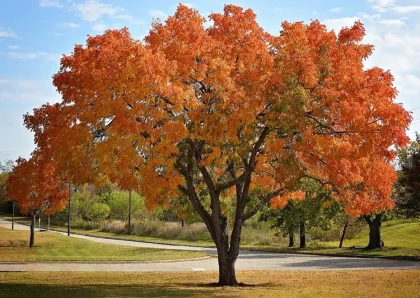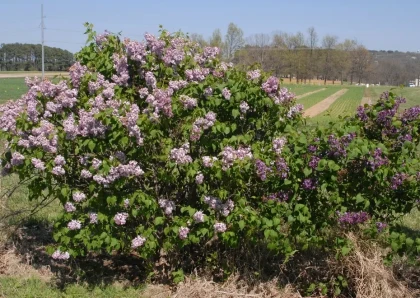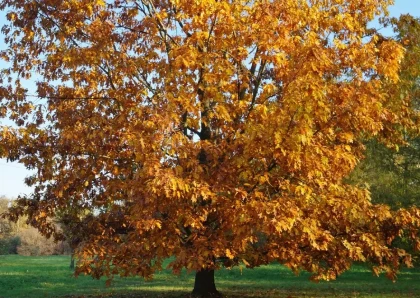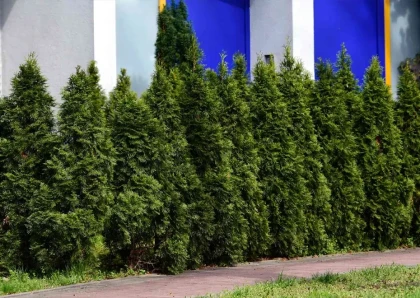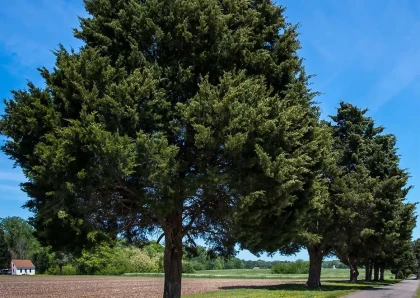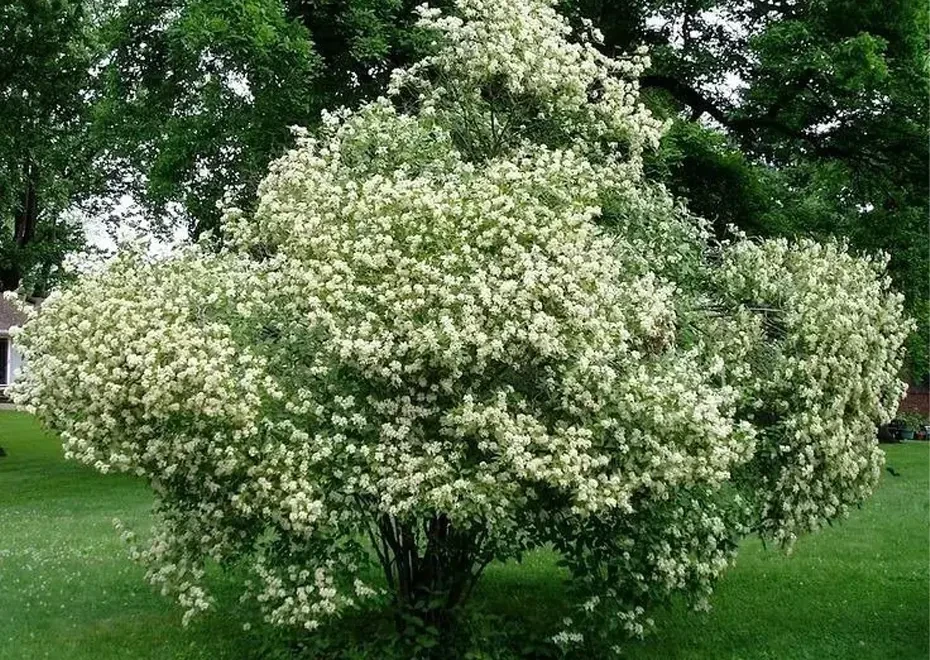
Gray Dogwood
Overview
Cornus racemosa, commonly known as the gray dogwood or northern swamp dogwood, is a deciduous shrub native to eastern North America. It belongs to the Cornaceae family and is closely related to other dogwood species. The shrub is typically found in wetlands, along stream banks, and in moist woodland areas.
Characteristics:
- Size: Gray dogwood can grow up to 6 to 10 feet (1.8 to 3 meters) tall and may spread to form dense thickets.
- Leaves: The leaves are simple, opposite, and oval-shaped, with a dark green color in the summer and often turning reddish-purple in the fall.
- Flowers: In late spring to early summer, gray dogwood produces small, creamy white flowers in flattened clusters called cymes.
- Fruits: The shrub produces white to bluish-white berries that ripen in late summer and persist into winter, providing a valuable food source for birds and other wildlife.
- Bark: The bark is grayish-brown, and the stems have a distinctive arching habit.
- Wildlife importance: The fruits are a significant food source for various bird species, including migratory songbirds. The shrub also provides cover and nesting sites for wildlife.
Different Types of Dogwoods
Flowering Dogwood (Cornus florida)
Cornus florida, commonly known as the flowering dogwood, is a small deciduous tree native to eastern and southeastern United States. It is well-known for its attractive flowers and is a popular ornamental tree in landscapes and gardens.
Red Osier Dogwood (Cornus sericea)
Cornus sericea, also called the red osier dogwood or redtwig dogwood, is a deciduous shrub native to North America. It is known for its bright red stems, which add winter interest to the landscape. The shrub is often found in wetlands and riparian areas.
Kousa Dogwood (Cornus kousa)
Cornus kousa, commonly known as the Kousa dogwood or Japanese dogwood, is a small deciduous tree native to East Asia. It is well-regarded for its showy bracts that resemble flowers, which appear after the true flowers have bloomed.
Wood Products from Gray Dogwood
- Tool handles: The strength and durability of Gray Dogwood wood make it suitable for crafting tool handles, such as hammers, axes, and chisels.
- Walking sticks and canes: Its attractive and durable wood makes it a good choice for crafting walking sticks and canes.
- Small crafts and carvings: The fine-grained wood of Gray Dogwood lends itself well to small woodworking projects and intricate carvings.
- Turned objects: Due to its workability, Gray Dogwood can be turned on a lathe to create bowls, cups, and other round-shaped objects.
- Wooden dowels: Gray Dogwood can be used to produce wooden dowels that are commonly used for joinery and other woodworking applications.
- Firewood: The dense wood of Gray Dogwood can be used as firewood, providing a good source of heat.
- Natural fencing and barriers: Its dense growth habit makes it suitable for creating natural fencing and barriers, especially in rural and naturalized landscapes.
Benefits of Gray Dogwood
- Wildlife Habitat: Gray Dogwood provides essential food and shelter for wildlife. The white to bluish-white berries it produces in late summer and persist into winter are a valuable food source for birds and other wildlife, including songbirds, game birds, and small mammals.
- Erosion Control: The dense root system of Gray Dogwood helps stabilize soil along waterways and slopes, making it useful in erosion control and soil conservation efforts.
- Riparian Buffer: Planting Gray Dogwood along stream banks and water bodies helps create riparian buffers, which improve water quality by filtering pollutants and preventing soil erosion.
- Restoration Projects: Gray Dogwood is commonly used in ecological restoration projects to enhance biodiversity and restore natural habitats.
- Landscaping: The attractive appearance of Gray Dogwood, including its white flowers in spring and reddish-purple fall foliage, makes it suitable for ornamental landscaping and naturalistic gardens.
- Adaptability: Gray Dogwood is adaptable to various soil conditions and can tolerate both wet and dry environments, making it suitable for a range of landscapes.
- Native Plant: Being native to eastern North America, Gray Dogwood supports local ecosystems and promotes biodiversity.
- Low Maintenance: Once established, Gray Dogwood requires minimal maintenance, making it a low-maintenance landscaping option.
- Drought Tolerance: Gray Dogwood has some degree of drought tolerance, which can be beneficial in regions with periodic water shortages.
- Carbon Sequestration: Like other plants, Gray Dogwood contributes to carbon sequestration, helping mitigate the effects of climate change by absorbing carbon dioxide from the atmosphere.
Tips for Planting and Maintaining Gray Dogwood
- Planting:
- Choose the right location: Gray Dogwood thrives in full sun to partial shade. Select a planting location with well-draining soil to avoid waterlogged roots.
- Planting time: The best time to plant Gray Dogwood is in the early spring or fall when the weather is cooler and there is less stress on the plant.
- Prepare the soil: Before planting, amend the soil with organic matter to improve fertility and drainage. This will help the plant establish strong roots.
- Planting depth: Dig a hole slightly larger than the root ball of the plant. The top of the root ball should be level with the ground surface.
- Watering: Water the plant thoroughly after planting to help settle the soil and provide adequate moisture to the new roots.
- Maintaining:
- Watering: Gray Dogwood is relatively drought-tolerant once established. However, during the first year, provide regular watering, especially in dry periods, to help the plant establish a strong root system.
- Mulching: Apply a layer of organic mulch around the base of the plant to conserve moisture, suppress weeds, and maintain a more even soil temperature.
- Pruning: Gray Dogwood benefits from regular pruning to encourage new growth and maintain a more compact and tidy shape. Prune in late winter or early spring before new growth begins.
- Fertilizing: In most cases, Gray Dogwood doesn't require heavy fertilization. However, if the plant appears weak or pale, you can apply a balanced, slow-release fertilizer in the spring.
- Pest and Disease Management: Gray Dogwood is generally not prone to severe pest or disease issues. However, monitor the plant regularly for signs of any problems and address them promptly.
- Deadheading: Removing spent flowers can help maintain the plant's appearance and promote more blooms in the following season.
- Propagation: If you want to propagate Gray Dogwood, you can do so by collecting and planting seeds or by taking softwood cuttings in early summer.
- Wildlife considerations: If you're planting Gray Dogwood to attract wildlife, avoid using chemical pesticides or herbicides that could harm beneficial insects and birds.
Cons of Planting Gray Dogwood
- Invasive Potential: In some regions, Gray Dogwood can be invasive and spread rapidly, especially in disturbed areas or when it escapes from cultivation. It may compete with native vegetation and disrupt natural ecosystems.
- Aggressive Growth: Gray Dogwood can form dense thickets through vegetative reproduction, which may outcompete other plant species and reduce biodiversity in the area.
- Limited Ornamental Appeal: While Gray Dogwood can be beneficial for wildlife and naturalized areas, it may have limited ornamental appeal compared to other dogwood species, such as the flowering dogwood (Cornus florida).
- Uneven Appearance: The shrub's dense growth habit and tendency to produce new growth from the base can lead to an uneven appearance, requiring regular pruning and maintenance to keep it tidy.
- Susceptibility to Diseases and Pests: Although Gray Dogwood is generally not prone to severe issues, it may still be susceptible to certain diseases and pests, such as leaf spots, cankers, and scale insects.
- Spreading by Birds: Birds can disperse Gray Dogwood seeds, leading to its establishment in unintended areas, potentially becoming invasive.
- Root Competition: In some landscapes, Gray Dogwood's dense root system may compete with neighboring plants for water and nutrients.
- Not Suitable for Small Gardens: Due to its potential for aggressive growth and the need for regular maintenance, Gray Dogwood may not be suitable for small gardens or landscapes with limited space.
Conclusion
In conclusion, Gray Dogwood (Cornus racemosa) is a deciduous shrub native to eastern North America with several valuable attributes. It offers significant ecological benefits, such as providing essential food and shelter for wildlife, contributing to erosion control in riparian areas, and supporting local ecosystems as a native plant. Gray Dogwood's adaptability to various soil conditions and its relatively low maintenance needs make it a viable option for certain landscapes.
However, it's important to consider some potential drawbacks associated with Gray Dogwood, including its invasive potential in certain regions, aggressive growth habit, and limited ornamental appeal compared to other dogwood species. The shrub may also be susceptible to certain diseases and pests, requiring monitoring and management in some cases.
Overall, Gray Dogwood can be a valuable addition to naturalized areas, wildlife gardens, and restoration projects, where its ecological contributions and benefits to wildlife outweigh its potential cons. When planting Gray Dogwood, careful consideration of the local environment and ecosystem dynamics is essential to ensure responsible and sustainable landscaping practices. Consulting with local experts or environmental authorities can help make informed decisions about incorporating Gray Dogwood into your landscape and maximizing its positive impacts.
Frequently Asked Questions
1. What is Gray Dogwood (Cornus racemosa)?
Gray Dogwood, scientifically known as Cornus racemosa, is a deciduous shrub native to eastern North America. It is a member of the Cornaceae family and is closely related to other dogwood species. The shrub is characterized by its arching stems, oval-shaped leaves, and clusters of white to bluish-white berries.
2. What are the typical uses of Gray Dogwood?
Gray Dogwood has various uses, including:
- Wildlife Habitat: The berries of Gray Dogwood are a vital food source for birds and small mammals, making it a valuable addition to wildlife gardens and naturalized areas.
- Erosion Control: The dense root system of Gray Dogwood helps stabilize soil along waterways, making it useful in erosion control projects.
- Restoration Projects: Gray Dogwood is commonly used in ecological restoration to enhance biodiversity and restore natural habitats.
- Landscaping: With its attractive white flowers in spring and reddish-purple fall foliage, Gray Dogwood can be used for ornamental landscaping in suitable environments.
- Tool Handles: The dense and hard wood of Gray Dogwood makes it suitable for crafting tool handles.
- Firewood: The dense wood can be used as a source of firewood.
3. Is Gray Dogwood invasive?
Gray Dogwood can exhibit invasive tendencies in certain regions, particularly in disturbed areas. It can spread and form dense thickets, potentially outcompeting native vegetation and disrupting local ecosystems. It's crucial to be aware of its behavior and consult with local experts before planting Gray Dogwood.
4. How to propagate Gray Dogwood?
Gray Dogwood can be propagated through various methods, such as:
- Seeds: Collect seeds from ripe berries, stratify them in the refrigerator for a few months, and then plant them in a suitable growing medium.
- Cuttings: Take softwood cuttings in early summer and root them in a well-draining rooting medium.
- Division: Divide mature plants during the dormant season to create new individuals.
5. How to care for Gray Dogwood in the garden?
To care for Gray Dogwood in your garden, consider the following tips:
- Location: Choose a planting location with full to partial sun and well-draining soil.
- Watering: Provide regular watering during the first year to establish a strong root system. Once established, it is relatively drought-tolerant.
- Pruning: Prune in late winter or early spring to remove dead or diseased wood and promote new growth.
- Fertilizing: Gray Dogwood generally does not require heavy fertilization, but a balanced fertilizer can be applied in spring if needed.
- Pest and Disease Management: Monitor for pests and diseases, and take appropriate measures to manage any issues.





